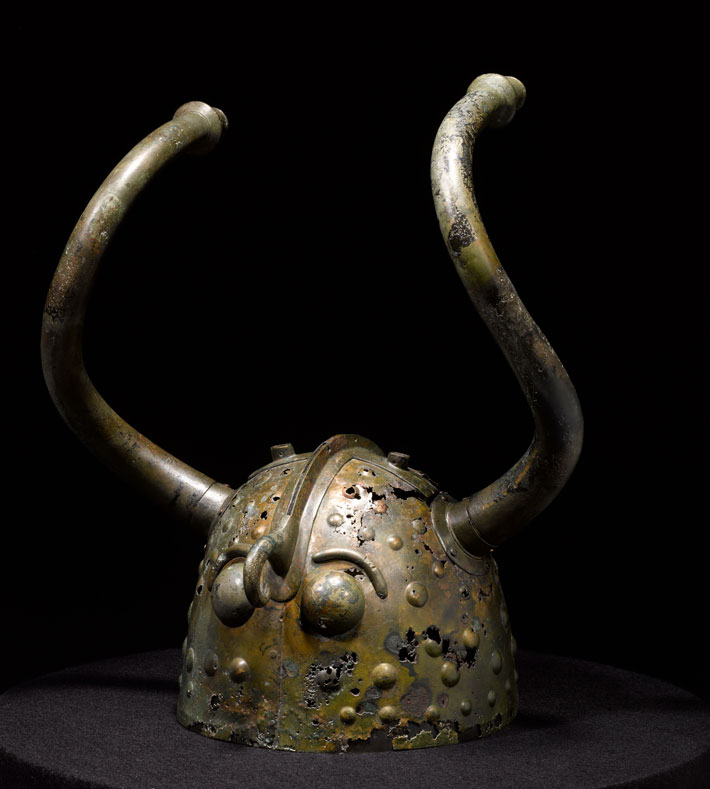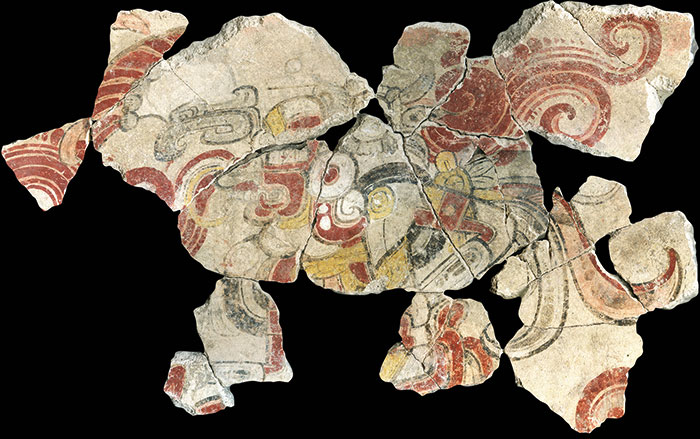
AARHUS, DENMARK—Live Science reports that Helle Vandkilde of Aarhus University and her colleagues dated a sample of birch tar found recently on one of two horned helmets discovered in 1942 in a peat pit in eastern Denmark. Although curved horns have long been associated with medieval Vikings in popular culture, the tests indicate that the so-called Viksø helmets were ritually deposited in the bog around 900 B.C., some 1,500 years before the Viking Age. The helmets also bear symbols resembling the eyes and beak of a bird of prey. Feathers are thought to have been fastened to the ends of the helmets’ horns with birch tar. Each helmet may have also been fitted with a mane of horsehair. Vandkilde explained that bulls’ horns and birds of prey were used as symbols of the sun in the ancient Near East, and in Sardinia and southwest Iberia during the Bronze Age. These symbols may have traveled with traders to Scandinavia along with metals and other items, and been adopted by local leaders as the region became more politicized and centralized, she added. “And those leaders must have used religious beliefs and innovative traits, like the horns, to further their power,” Vandkilde said. Read the original scholarly article about this research in Praehistorische Zeitschrift. To read about a new study of a Viking helmet uncovered in Britain in the 1950s, go to "An Enduring Design."










